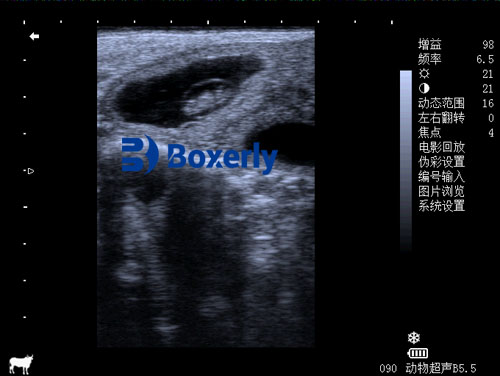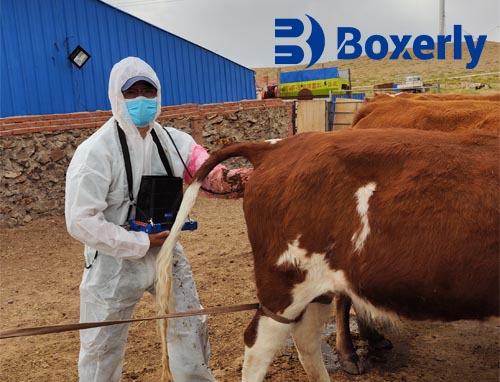Ultrasound imaging, long utilized in human medicine, is now a standard tool in animal healthcare—particularly in livestock farming. With its ability to provide real-time, non-invasive internal views, ultrasound enhances diagnostics, improves reproductive success, and reduces unnecessary treatments. This article explores the many ways ultrasound contributes to better animal management, health, and productivity.
A non-invasive window into animal health
Ultrasound works by sending high-frequency sound waves into the body and capturing the returning echoes to create images. In veterinary contexts, especially in large-animal care, this technique allows farm operators to inspect internal organs without stress, sedation, or surgery. This capability has revolutionized routine veterinary tasks, reducing labor and improving accuracy.
Reproductive management and pregnancy diagnosis
One of the most widespread uses of ultrasound in livestock is pregnancy detection. In cattle, sheep, pigs, and goats, early and accurate pregnancy diagnosis is key to improving herd productivity. Ultrasound can confirm pregnancy as early as 25–30 days in cattle, helping farmers cull non-pregnant animals earlier, optimize breeding intervals, and better forecast feed and space requirements.
Furthermore, it enables the detection of multiple fetuses, fetal viability (heartbeat), and abnormalities such as mummification or embryonic death. For example, in swine production, detecting a non-viable pregnancy early can prevent economic losses from feeding non-productive sows for weeks.

Improving breeding efficiency
Beyond confirming pregnancies, ultrasound aids in evaluating female reproductive status—such as ovarian follicle development and uterine health. For instance, dairy farms use ultrasound to identify when cows are in estrus (heat), ensuring timely artificial insemination. This increases conception rates and shortens calving intervals.
Ultrasound is also used in bull fertility evaluations. Scrotal ultrasound helps assess the testicles for abnormalities like fibrosis or tumors, which could impact breeding soundness.
Monitoring internal organs and diagnosing diseases
Ultrasound is invaluable in diagnosing abdominal, thoracic, and musculoskeletal issues. In ruminants, it can detect hardware disease (traumatic reticuloperitonitis), liver abscesses, and intestinal blockages. For pigs, it helps examine kidneys, bladder, and other organs, especially during health inspections or pre-slaughter evaluations.
Lung ultrasound is increasingly used to detect pneumonia in calves and pigs, offering a rapid, field-usable method of assessing respiratory disease severity. Unlike auscultation, which depends on sound interpretation, ultrasound provides objective visuals of lung consolidation, fluid buildup, or abscess formation.

Guiding interventions and improving animal welfare
Ultrasound also plays a role in guiding medical procedures. Fine needle aspirates, biopsies, or fluid drainage procedures are safer and more effective when ultrasound is used to visualize internal structures in real-time. This minimizes tissue damage, reduces recovery time, and avoids unnecessary surgeries.
Ultrasound even improves decision-making during emergencies. For example, a sudden bloating episode in a goat could be due to gas accumulation or fluid buildup. A quick scan helps differentiate the causes and guide rapid treatment.
Minimizing unnecessary treatments
By providing clarity in diagnosis, ultrasound helps reduce the blind use of antibiotics or medications. When the cause of illness is confirmed through imaging, veterinarians and farmers can select targeted therapies, reducing drug costs, withdrawal periods, and antimicrobial resistance risks.
Cost-effective technology for modern farms
Many farmers are surprised to find that portable ultrasound devices are now affordable and easy to use. Handheld ultrasound scanners can connect to smartphones or tablets and are designed for rugged field use. With just basic training, farm operators can perform quick scans themselves and consult with remote veterinarians if needed.
In large commercial operations and small family farms alike, this self-sufficiency enhances response time and reduces veterinary costs over the long term.
Training and skill development
The effectiveness of ultrasound depends on operator skill. As more veterinarians and farmers become trained in interpreting images, the use of this tool becomes even more valuable. Workshops, online courses, and on-device guidance apps are helping spread ultrasound literacy across the livestock sector.
Conclusion: A transformative tool for animal agriculture
Ultrasound has moved beyond the veterinary clinic and into the hands of livestock professionals. Its utility in reproduction, internal diagnostics, welfare assessments, and medical interventions makes it one of the most versatile and important technologies in modern animal farming. As devices become more user-friendly and cost-effective, ultrasound is reshaping how animal health is managed—providing better outcomes for animals and improved efficiency for producers.
Sources:
-
“Use of ultrasonography in cattle reproduction” – The Cattle Site
https://www.thecattlesite.com/articles/ultrasonography-in-cattle-reproduction/ -
“Veterinary Ultrasound: A Diagnostic Tool for Livestock” – University of Nebraska–Lincoln Extension
https://beef.unl.edu/veterinary-ultrasound-livestock -
“Lung Ultrasound in Calves: A Field-Based Diagnostic Tool” – Merck Animal Health
https://www.merck-animal-health-usa.com/newsroom/lung-ultrasound-calves -
“Reproductive Ultrasound in Swine” – Iowa State University Extension
https://www.extension.iastate.edu/vet/reproductive-ultrasound-swine